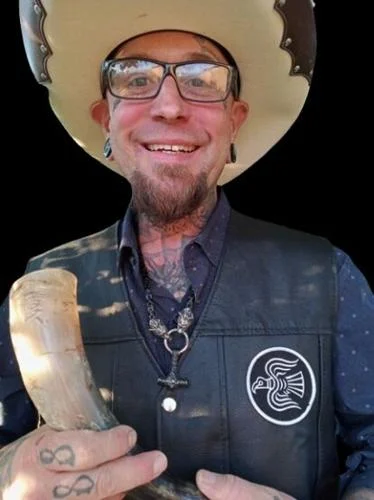 |
| My phone camera is done |
This month our book club read
Eruption, by Michael Crichton and James Patterson.
To a great extent the book reads like a screenplay. Short chapters sketch out the action, each ending with a small cliffhanger of some sort. It is a thriller and much of the action is compelling, with some intense and engaging descriptions of volcanic eruptions, fiery death, and havoc. The pace of the novel is inescapable, with an "hours until eruption" countdown at the top of most chapters. Of course, it is not just the eruption that drives the plot. There is a military cover-up that amps up the stakes to an apocalyptic level, the fate of all life on the planet hangs in the balance.
Only a few heroic characters stand in between us and the impending destruction. These heroes are made for the movies, as
Rob Merrill writes in his AP review, "The book’s characters are straight out of central casting."
Ron Charles' review in The Washington Post points out that the "casting suggestions are embedded right in the text," which at various moments compares characters to a certain generation of movie stars like George Clooney, Pierce Brosnan, and Halle Berry. The protagonist is the passionate, no-nonsense, chief scientist of the Hawaii Volcano Observatory, John MacGregor, aka Mac, who has a soft heart for those he loves. He teams up with the rugged, take-charge General Rivers, chairman of the Joint Chiefs of Staff, who has flown to Hawai'i to coordinate the disaster response. The beautiful but overlooked planetary scientist Jenny Kimura hangs around in the background waiting for moments to console love-interest Mac. And so on, with a host of other made-for-cinema characters including a young, gorgeous demolitions expert; a young, gorgeous NYT reporter; and a few young, handsome Hawaiian surfers ready for a few scenes catching the waves on Hilo beach.
The book becomes more interesting if we turn to some questions that can be raised adjacent to the storyline. Here are a couple I've been thinking about that tie into religion:
This is a doomsday story about the impending destruction of the world - literally a fire and brimstone scenario of biblical proportions that is about to be unleashed on humanity. It is
an apocalyptic story. While the eruption of the volcano is a natural phenomenon, it enacts a sort of justice on human foolishness and hubris. The volcano chasers - arrogant, rich, attention-seeking dilettantes - are the first to go in a morality play sort of way. But the potential for worldwide destruction is the result of a military experiment-gone-wrong. Hidden away on the slope of Mauna Kea are hundreds of canisters of a secret military herbicide code-named Agent Black, an unstable chemical agent that makes Agent Orange look like Kool-Aid. Contact with the lava would release a chemical plume so toxic that it would contaminate the entire globe and wipe out all life on earth. The impending apocalypse draws this human flaw into focus, this sin of military-industrial hubris, the urge to control and to wield death as we would choose, now threatens all life.
This really is
the religio-ethical function of apocalyptic literature - to draw attention to the sins, flaws, immorality that we tend to overlook or accept as normal, especially the structural and systemic conditions that subjugate, dehumanize, and inflict suffering on common people. Apocalypse pulls back the veil of normality and reveals the hidden ethical tensions, the fatal flaws - that are embedded in human societies. Apocalypse reveals how power is distributed and flows in ways that perpetuate injustice, violence, and evil. By revealing and condemning these inequities, forecasting their imminent destruction, apocalyptic literature calls us to pay attention to our social injustices in one way or another. Too bad this book will be taken for simply a thriller and its implicit critique of the military-industrial complex and the long-term global environmental damage we have done will be ignored or lost to most of its audience. Likely, it will not compel its white conservative American readers to take stock, reject militarism, acknowledge the real environmental crisis we have created, and to come together around real solutions and social change.
The second religious theme is that of animism. The book explores or at least references a good deal of volcano and earth science, very interesting stuff. The use of popular fiction to explore science along with its triumphant and horrific implications is Crichton's specialty. However, the book also puts forward the possibility that despite everything the scientists know, there is another way to look at the volcano, another frame of reference that is preserved in the animism of the Native Hawai'ians. The best description of animism comes in a conversation among the Native youth surfers as they argue about who really knows about the volcano. Lono, a Native teenager who is mentored by Mac the chief scientist of the Hawaiian Volcano Observatory, takes the side of science but not without some cognitive dissonance.
"I know what I heard and what I saw," Lono said. "These guys are scientists. They know what they're talking about"
"Haole scientists," Dennis said. (1)
"I'm telling you, they were talking about something loa big," Lono said. "And loa bad." (2)
Lono, kama'aina like his friends, knew all the myths and legends about volcanoes, the way old people like Dennis Lee's grandmother thought of them as powerful living creatures who were not to be interfered with for fear of their response. (3)
(Crichton/Patterson, Eruption, 168-69, italics are in the original text)
 |
I bought this poster of Pele, by Herb Kawainui Kāne, when I was at Hawai'i Volcanoes National Park in 1995. |
This short passage is not a bad description of animism. The Native elders (aka Dennis Lee's grandmother) are the keepers of traditional knowledge. They comprehend and relate to the volcano not as a thing and not through the physical data of science but as a person, a being. To them, the volcano is "a powerful living creature" as Crichton/Patterson puts it (although I would use the term "being" instead of "creature" - the volcano is a goddess, a creator more than a creature.) This description is consistent with animism and works better than the older terminology of "spirit" or "spirit being" which tends to overly spiritualize the sacred being as somehow otherworldly or ethereal.) We are not talking about a spirit that lives in the volcano, but the volcano itself in the world as a being of immense power, presence, and agency capable of giving and creating land and life and also capable of acts of great, cataclysmic destruction and violence. The human beings dwell on the island with this powerful living being, in the presence of and in relationship to her. In the course of this relating, this powerful being is sometimes thought of and addressed as the goddess Pele. She is the volcano, or
the volcano is the embodied aspect of Pele.
Despite this quick glance, the book missed the opportunity to present a more robust and compelling picture of animism. None of the main characters expresses or supports an animistic view. The passage relegates the animist perspective (rather than entrusts it) to a very minor character's grandmother who never actually appears in the book. In a later passage, animism appears again, in the one brief appearance of Lono's fundamentalist, anti-science, fatalistic Native mother. Despite the impending danger, she "stubbornly refused" to listen to reason and evacuate. (Eruption, 400) Note that the authors use the word "refused" three times in a row here to characterize Lono's animistic mother as both ignorant and contrary). Instead of evacuating in the face of imminent danger, she tells her son:
"The goddess has always provided for us . . . . It is Pele's will at work now. Not mine or yours. Not your friend Dr. MacGregor's."
"Are you saying it's her will for us to stay and die in this house?" Lono asked.
"You must have faith," she said. "You were raised in the ways of the natural world, and you were also raised in the ways of the spiritual world."
But I'm growing up in the world of science, he wanted to tell her. In the real world.
(Eruption, 401, italics are in the original text.)
This passage seems wildly out of touch with the actual lived animism of Native Hawai'ian people. This artificial conflict between "faith" and "science" is more characteristic of the conservative Christian stance against evolution, and even there it is more nuanced. Unfortunately, Native Hawai'ians have been characterized frequently and unfairly in this way. During the protests against the Thirty Meter Telescope on the slope of Mauna Kea where so much of this book takes place, scientists
called the protestors “a horde of native Hawaiians” and wrote
stupid things like "It seems to me that it's an argument about returning to the stone age versus understanding our universe and it'll be interesting to see who wins in the end." Yet as Native spokespeople
made clear: "The conflict was never between our culture and western science,” said Wong-Wilson, who is executive director of the Lālākea Foundation, a group of cultural and spiritual practitioners. “We’re as fascinated with our view of the heavens, our view of constellations, and our relationship [with them] from the Native perspective as anything.” Rather, she said, the issue was “the use of particular areas of land, of which there may be conflicting interests.”
Ultimately, there are no strong or compelling Native Hawai'ian voices in the story, even though the book is set in the geographical heart of Native activism in Hawai'i. The traditional Native religious perspective is circumscribed and misrepresented despite the fact that Maua Kea has been the site of Native activism and organizing for years and despite the many articulate explanations of Native Hawai'ian spirituality. Yes, the Thirty Meter Telescope protests occurred from 2014-22 and Crichton died in 2008, so his original story predates that event. But Patterson's rewrite could do a lot more to frame the story in light of Native Hawaiian worldview, religion, and resistance. Yes, the novel includes a protest in Hilo - but it is quickly coopted by the two main haole characters - the scientist Mac and the army general Rivers, whose voices and perspectives dominant this book, subverting the alternative visions, identities, and solutions of Native people and religions.
Notes:
1. The Hawai'ian language term haole emphasizes that these are white scientists, outsiders, who shouldn't be completely trusted.
2. Loa is an important Hawai'ian concept of distance and measurement. After reading this article, I think it is communicating the sense of something cosmic, an event with a magnitude that transcends human comprehension and scale, beyond the human ability to control and handle. It signifies the sacred nature of the volcano and the magnitude of its agency.
3. Kama'aina literally
"child of the land"
refers to those native to the Hawai'ian islands. According to Kiope Raymond at the University of Hawai'i, the word carries connotations of the Native Hawai'ian animistic relationship to the kalo plant, from which the Hawai'ian staple food, poi, is made.



























